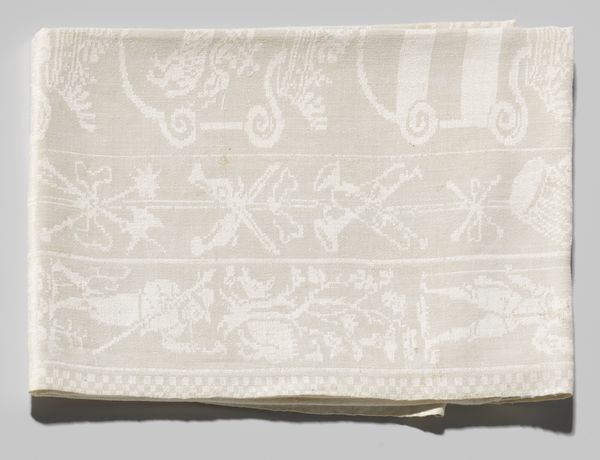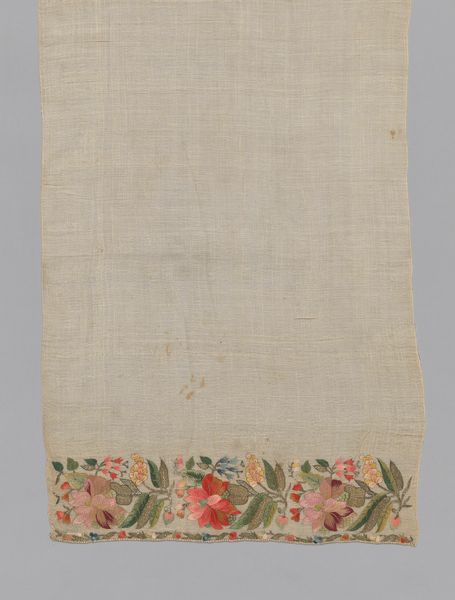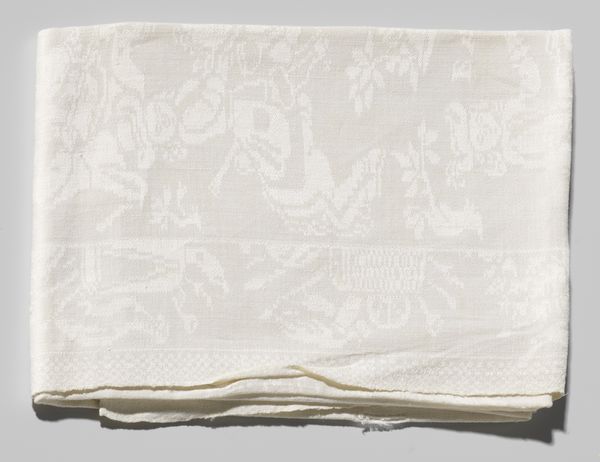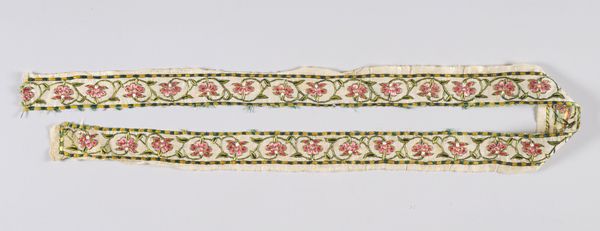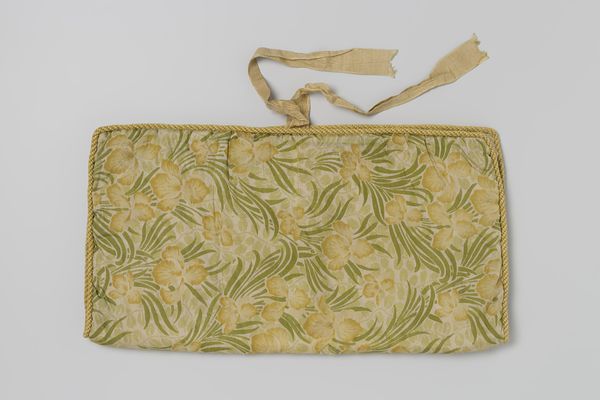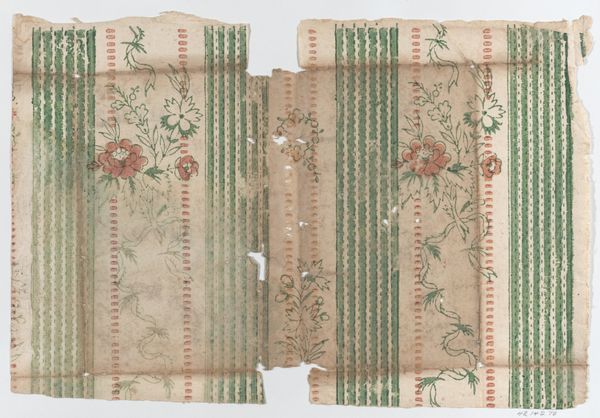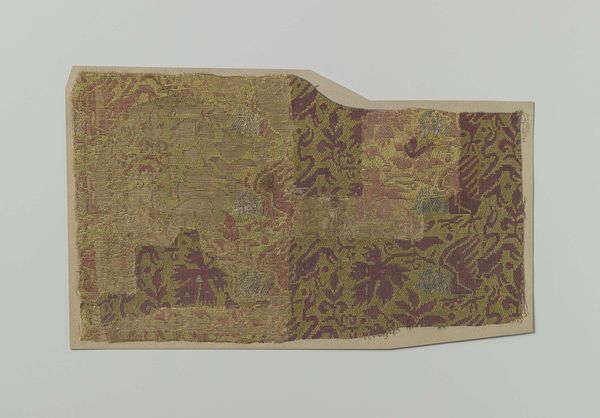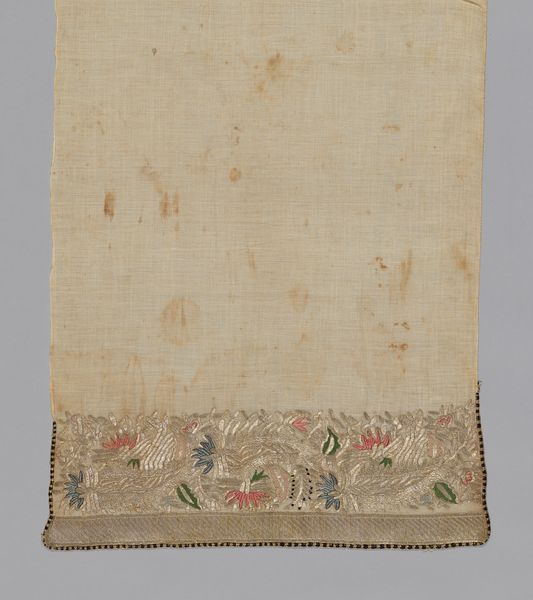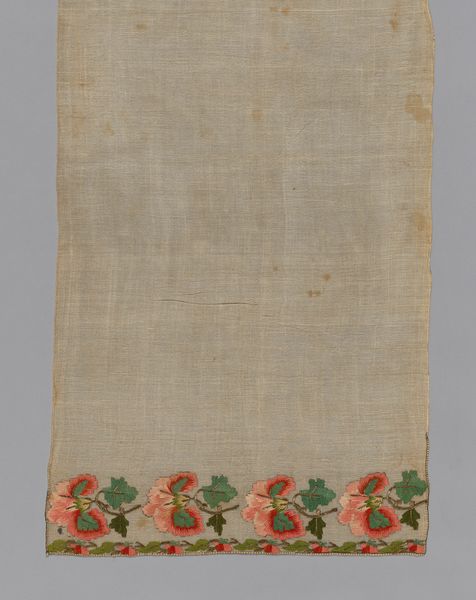
Rol chiné-lint (?) met drie banen ajourwerk en gedrukt bloemmotief in rose, groen en blauw c. 1875 - 1900
0:00
0:00
gustavschnitzler
Rijksmuseum
fibre-art, weaving, textile
#
fibre-art
#
fashion mockup
#
weaving
#
textile
#
pattern making
#
fashion and textile design
#
hand-embroidered
#
embroidery
#
fabric design
#
textile design
#
decorative-art
#
imprinted textile
#
layered pattern
#
clothing design
Dimensions: width 6 cm, height 7.5 cm, depth 8 cm, width 10.5 cm
Copyright: Rijks Museum: Open Domain
Editor: We’re looking at a piece called "Rol chiné-lint (?) met drie banen ajourwerk en gedrukt bloemmotief in rose, groen en blauw," or roughly, “Rol chiné ribbon with three openwork bands and printed floral motif in pink, green and blue," dating from around 1875 to 1900. It's at the Rijksmuseum. It seems to be textile based. I’m immediately struck by how delicate it is – like a fragment of a lost world of craftsmanship. What historical forces do you think shaped the creation and preservation of a piece like this? Curator: That’s a wonderful starting point. It's crucial to see this textile within the context of the burgeoning industrial revolution. Machine-made textiles were becoming increasingly available and affordable. So, how did pieces like this, crafted with hand techniques, maintain their value? Was it simply nostalgia for pre-industrial crafts? Or does this tell us about social class? Who do you imagine was its audience or intended owner? Editor: That’s interesting – I hadn’t thought about the class element so directly. Perhaps this was a way for the upper classes to still express a commitment to beauty and bespoke creations. Is it fair to suggest this piece became a kind of silent protest to industry? Curator: A silent protest – I like that! Certainly, there was a segment of society that actively resisted the homogenizing forces of industrial production. Pieces like this also acquire value through their institutional context - the very fact that it’s displayed in the Rijksmuseum elevates its status. Think about the museum as a social and cultural arbiter – what statements is it making by showcasing this textile? Editor: So, by displaying it, the museum emphasizes the artistic merit and resists the narrative of mass production. Curator: Exactly. It also reminds us that taste and value aren't simply inherent in the object, but actively constructed and reinforced by institutions. It speaks to the cultural value we place on handicraft and artistic skill when faced with mechanical reproducibility. Editor: This makes me think about its survival – that museums also become spaces that negotiate these narratives of art history and cultural worth, preserving some objects, but not others. Thanks, I’ve really never thought of institutions in this way. Curator: Precisely! And by engaging with those narratives, we begin to see how power shapes what we consider art.
Comments
No comments
Be the first to comment and join the conversation on the ultimate creative platform.

